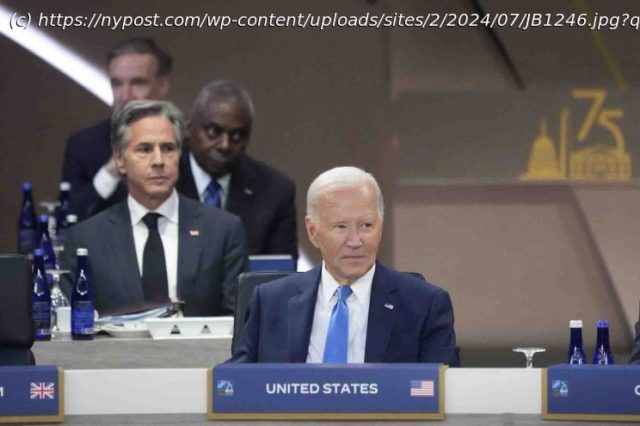The signs of the gathering threat from the Kremlin are plain enough — and the leaders of the alliance must urgently begin devising a robust and decisive response.
This week’s NATO summit in Washington convened as the West faces what may be the most dangerous situation since the Cuban Missile Crisis of 1962.
The signs of the gathering threat are plain enough — and the leaders of the alliance must urgently begin devising a robust and decisive response.
On June 28, Vladimir Putin announced that Russia would begin production and deployment of nuclear-capable short- and intermediate-range missiles — weapons that have been banned since 1987.
While Russia has likely been quietly producing these weapons for years, the timing of Putin’s public confirmation was troubling.
Coming hours after the presidential debate between President Biden and Donald Trump, the statement was something more than Moscow’s habitual nuclear bluff: It was a link in a worrisome chain of events.
First, the war in Ukraine that looked to be tilting in Russia’s favor over the winter and spring now appears to be leaning in the opposite direction.
Russia’s major offensive on Kharkiv in Ukraine’s northeast has stalled, while renewed funding for Ukraine passed by Congress and authorization of strikes over the Russian border has added significantly to Ukraine’s strength on the battlefield.
At the same time, the transfer of air defense Patriot missile batteries to Ukrainian forces will soon curtail Russia’s key advantage in attacking civilian, industrial and military objectives with impunity.
Домой
United States
USA — mix Biden’s weakness prompts Putin’s increased threats — and NATO must prepare






